Roughly 25% of all motorcycle accidents are simply motorcycles running wide in corners. That’s a huge percentage. In the immortal words of a 19th-century naval officer; We have met the enemy and they are us. So today, we’re going to break down, as simply as we can manage, how to turn or how to corner on a motorcycle.
There is a better way to corner a motorcycle than the way you may have been taught in your basic rider course. We are going to try to focus primarily on the “what.” What we need to do in order to ride a motorcycle around a bend with the least amount of risk.
Stay Ahead of the Motorcycle
So many riders come up to us hoping for a secret technique that will suddenly make them a better rider. But that secret technique isn’t a secret at all, yet it’s the hardest thing for most of us to master. Looking, and thinking further ahead.
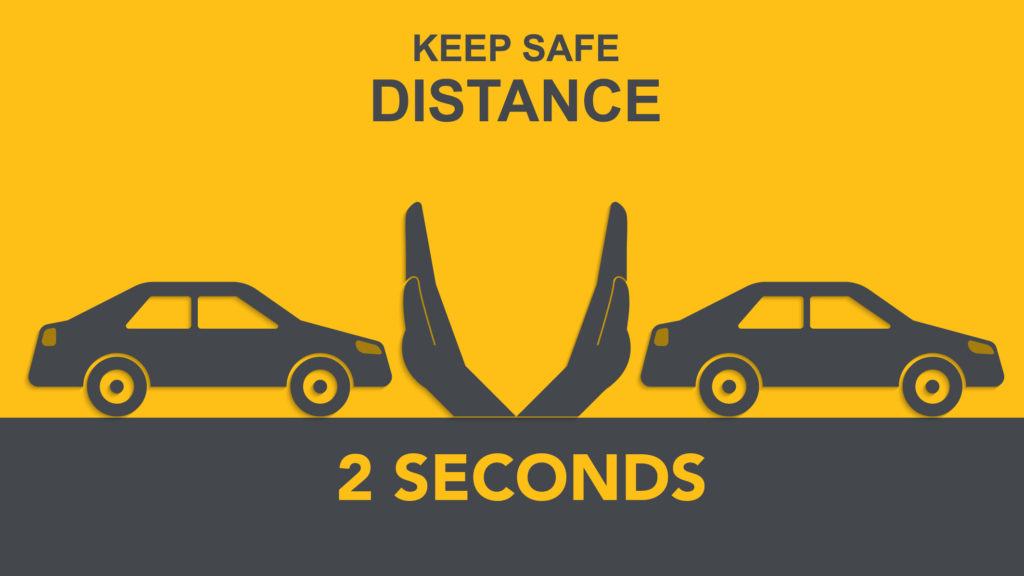
From our first driver’s education class when we were kids, the concept of a two-second following distance was so ingrained in us that it became, for many of us, not only how far we look but also how far we think ahead. But two seconds isn’t nearly enough time to react to much of anything.
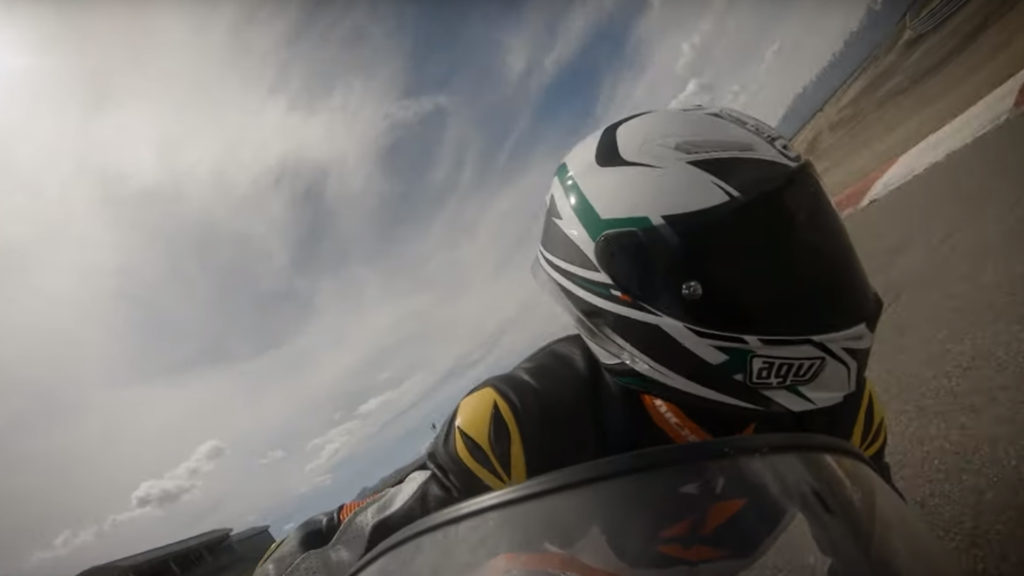
The only way to successfully ride a motorcycle is to teach ourselves to look and, more importantly, think further ahead. Air Force pilots call this “staying ahead of the aircraft.” I really like that saying. We need to “stay ahead of the motorcycle” we need to be actively looking and thinking about what we need to be doing ten to fifteen seconds from now. This is what separates good riders from great riders. The ability to look and think as far ahead as possible.
Enter Corners Wide
Prepare to enter the corner from the outside of the turn, not the middle, and definitely not the inside. There’s a number of reasons for this. Most importantly, when we enter a corner wide, it allows us to see further ahead into the corner. Remember how we just talked about the importance of looking ahead? Entering wide gives us the most visibility.
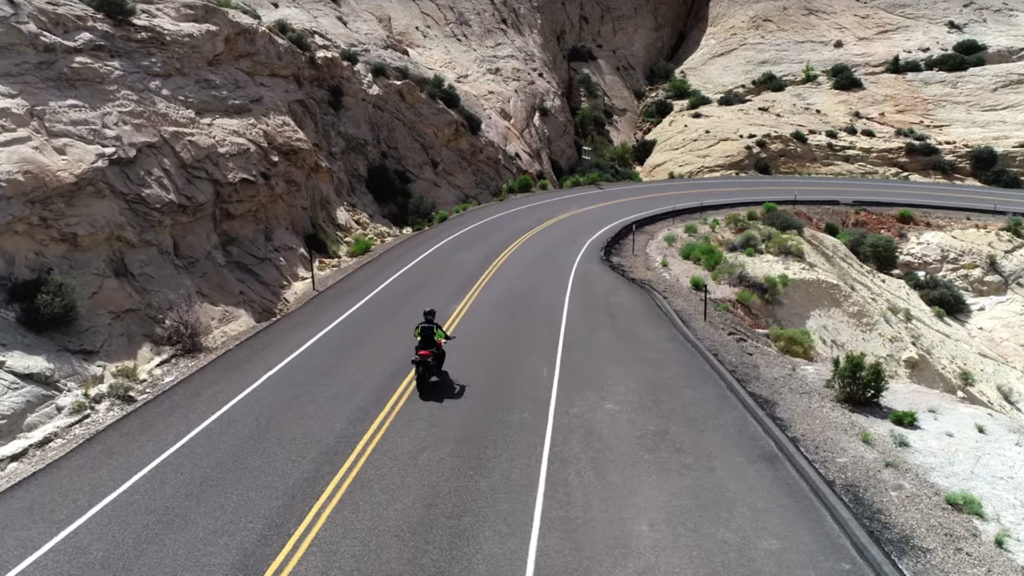
Entering wide also makes the arc of the corner bigger. In other words, the motorcycle doesn’t have to lean over as far because we’ve basically made the corner not as tight as it would be if we were on the inside.
Entering wide gives us the ability to see further ahead, makes the corner wider and gives us more choices in case there is an oncoming car running into our lane. For us, as riders, an iron-clad rule that we all need to hold ourselves to; Our lane is our limit. We should never be crossing those lines, especially that centerline.
Slow (and downshift) Before the Corner
On the racetrack and on the street the most common reason why we here at CanyonChasers see people crashing is simply just going too fast into corners.
We want to be conservative with our entrance speed so that we have more time and space to deal with turning. The objective we are looking for is that we almost always want to be exiting a corner faster than we entered it. Let me say that again; The goal is to go slow into a corner so that we can accelerate, or go fast, out of a corner. In slow. Out fast.
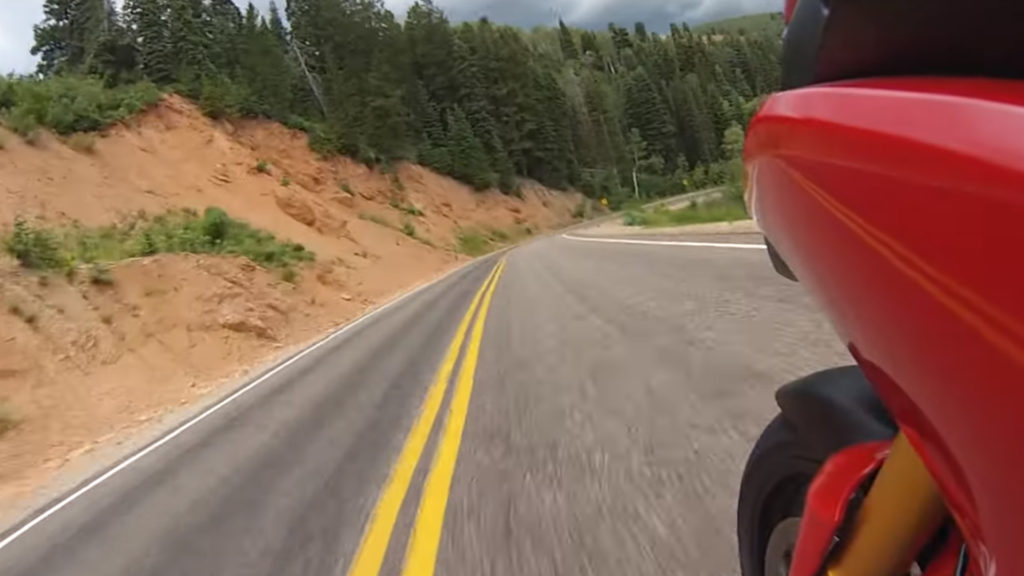
When we enter corners too fast when we overcook the entrance, we struggle to make the turn and end up running wide, or we end up grabbing the brakes in the middle of the corner, or we might have to lean the bike more than we may be comfortable with, which increases the chances of us crashing, or nearly crashing and we end up exiting corners really slowly.
As we ride towards every corner, we need to be looking ahead and thinking about when we want to begin slowing, planning on being conservative with our entrance speed.
Press to Initiate Lean
How do motorcycles go around corners? They lean. And how do we make them lean? Well, we press the handlebar in the direction of the turn. In order to get the motorcycle to begin to lean left, we need to gently press forward with our left hand. This will cause the bike to lean to the left. To lean to the right, press on the right hand.. This is often called countersteering.
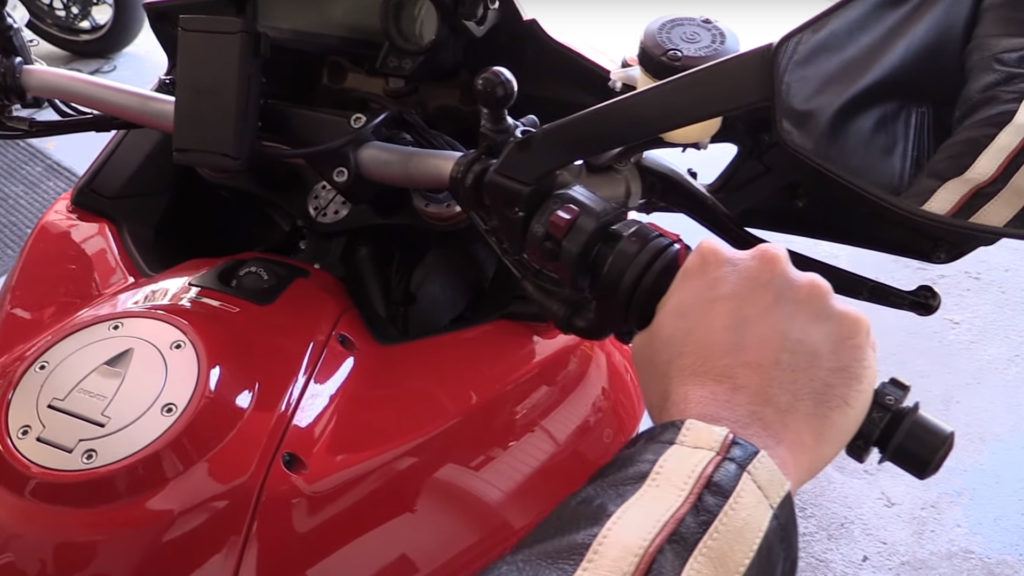
Practice this while you are sitting on your bike. Very gently press forward on your handlebar and feel the bike slightly lean in the direction of the corner. Once the motorcycle is leaning, the front tire will come around and steer as you’d expect, but the most efficient way to initiate that lean, or get the bike to lean a little more, is with some gentle and deliberate countersteering.
Slow Until You Can See the Exit
A lot of new riders are nervous about running wide in corners, so they tend to enter corners shallow or on the inside to give themselves more room in case they do. Part of this is due to a lot of new rider programs are still teaching that motorcycles must accelerate through an entire corner. This method is woefully outdated.
The problem is that speed and radius are linked. In other words, as soon as we start accelerating in a corner, the motorcycle stops turning and wants to run wide. So remember how we talked about entering corners wide and all the benefits we get from that? Here’s the next part of that.

When we slow into a corner, the radius, or the arc, of the corners is going to want to get smaller. This gives us a huge advantage. If we slow into corners, it is now very, very unlikely that we will run wide in most any corner. Plus, if there is something unexpected in a corner, like a stalled car, or a deer, because we are already slowing, slowing more is no big deal. If the corner, unexpectedly gets tighter, it’s no big deal because we are already slowing down, so it’s easy to slow a bit more and turn a little tighter.
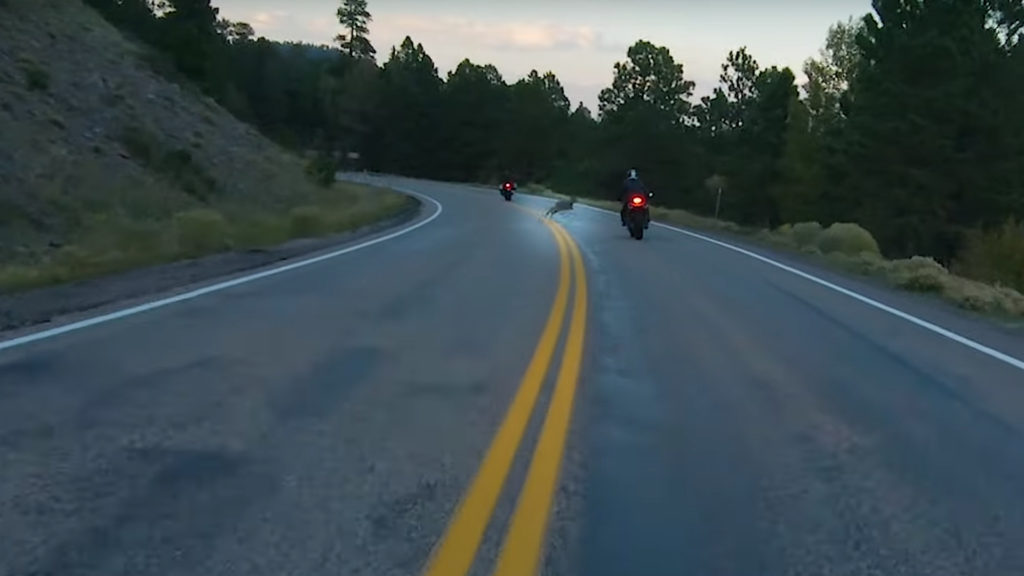
Grip comes from weight, this is why most of our bikes stopping power comes from the front brake. When we slow, weight shifts to the front, pushes the front tire into the ground, and we have more grip. So again, by slowing into a corner we have more grip in case we have to slow or stop, but also more grip for turning.
Ideally, we want to slow into corners using just a little bit of front brake. How much? Well, not much is needed. When you squeeze the front brake on your motorcycle, you will hear a faint “click” – this is the switch that turns on the brake light. Just this much front brake is all you need as you slow into a corner. Just enough to “click” the brake light on. Practice in the driveway or the garage, so you get really familiar with how this feels.
We want to gently slow into corners until we are comfortable with our speed and we can see our exit. Not only does this give us the most options to deal with the unexpected, like sand, or an oncoming car crossing the centerline, or a pothole, it’s also the method used by the worlds best motorcycle racers, because you don’t win championships running wide and crashing into the gravel pit.
Learn more about trail braking into corners.
Accelerate When You Can Reduce Lean
Remember how, earlier, I said that as soon as we start accelerating, the motorcycle stops turning and starts running wide? Let’s use that. When, and only when, we can see the exit of our corner AND we can take away lean angle, we can slowly begin to accelerate out of the corner. What we really want to do is to gently add throttle as we slowly take away lean angle.
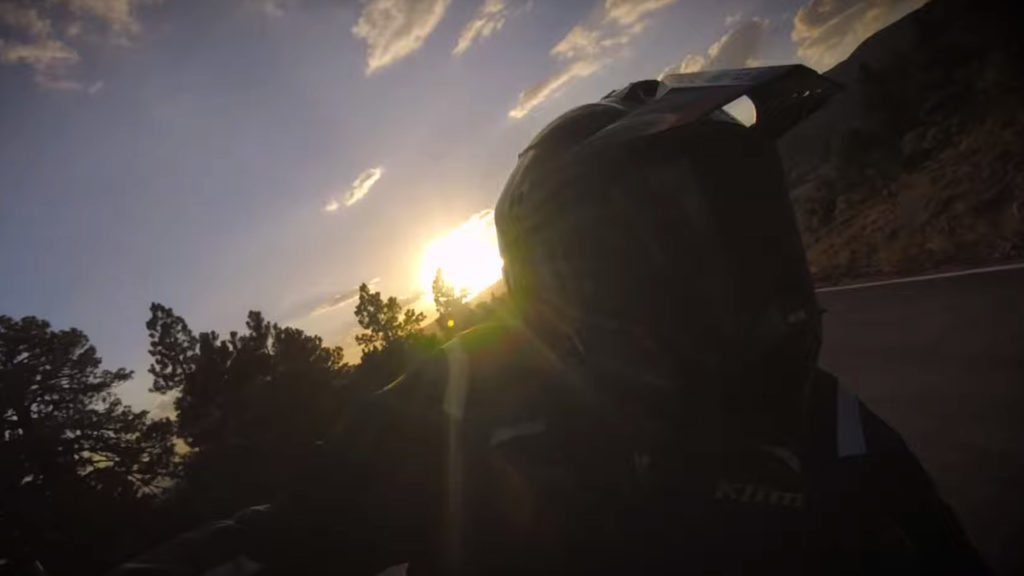
This is also the really fun part of cornering, that joyful sensation of gradually speeding up as we come out of a corner. This is also a great way to measure how well you did. If you didn’t get scared in the corner, you didn’t run wide and when you saw your exit and you had the confidence to start rolling on the throttle, those are all signs of a corner well done.
What Gear Should You Be In?
All the time riders ask what gear should I be in? You may be surprised that, unless you are racing and looking for every possible second off your next lap, it doesn’t really matter. You just want to be in a gear that is low enough that you can accelerate out of a corner.
What do you do when you find yourself in the middle of a corner, you can see your exit and you start accelerating out of the corner but you are in too high of a gear and the bike has no power. Just downshift.
Here’s the problem. I can’t tell you what gear to be in as you enter a corner because so many things will affect which gear you should be in as you exit. If the corner is going downhill, getting into a lower gear isn’t at all important because gravity will help you accelerate out. If the corner is uphill or really tight, you may need to downshift twice as you exit the corner. You may also find that as your experience grows and your skills sharpen, or even as you get your second motorcycle, how you shift in and out of corners will likely change.
So, don’t worry too much about shifting. It’s more important to get good at slowing into corners until you can see your exit and you can take away lean angle.
Summary
- Look ahead. Stay ahead of the motorcycle. Look and plan 12-15 seconds ahead.
- Enter Corners Wide
- Slow Before the Corner
- Press to Initiate Lean
- Continue to slow until you are comfortable with your speed and you can see your exit
- When you can see your exit and take away lean angle, begin to gently accelerate out of the corner.
You’ll notice that we do a lot more slowing than pretty much anything else. There’s an old racer saying that goes, “The fastest riders use the brakes the most” This has often been misunderstood to mean fast riders brake hard and brake late. Nothing is further from the truth, fast riders go to the brakes early, gently, and then drag the brake for a long time. And, as it turns out, this is also what safe riders do too. Slower is smoother, slower is safer, and crazy as it may sound, slower is faster.

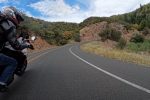
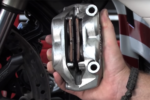
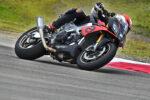
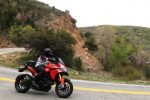

Thanks for the videos. Your videos are clean, clear, direct, good speaking skills, and properly informative.
I learned more about ‘how’ to accomplish these tips than I have from any other videos. For example: Trail Breaking is discussed by multiple advisors across the web-video spectrum. In your video you actually explain how to do it properly (ie: proper breaking action).